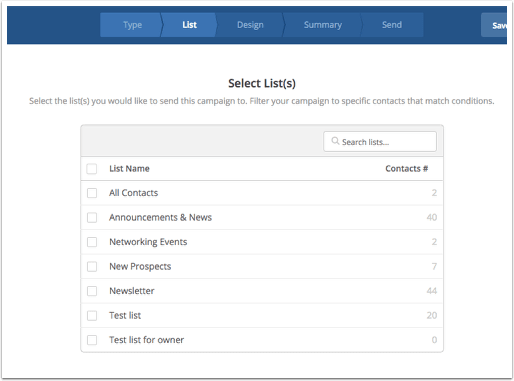If you want to convert leads into paying customers (which you do, of course), segmentation is one of the most important aspects of your marketing strategy.
No matter what line of business you’re in, your target customers are going to be a diverse mix of people with different needs – and these are going to change as they move along the buying process and edge closer towards making a purchase.
To deliver messages to each of these prospects, addressing their unique needs at each stage of the sales journey, you need to segment your leads – both at the moment you capture them and on an ongoing basis as their relationship with your brand changes.
This is your complete guide to lead segmentation and we’re going to show you exactly how to maximise sales with this crucial marketing strategy.
What is lead segmentation?
Lead segmentation breaks your collection of leads into smaller lists, based on their actions, that you can use to send more convincing marketing messages.
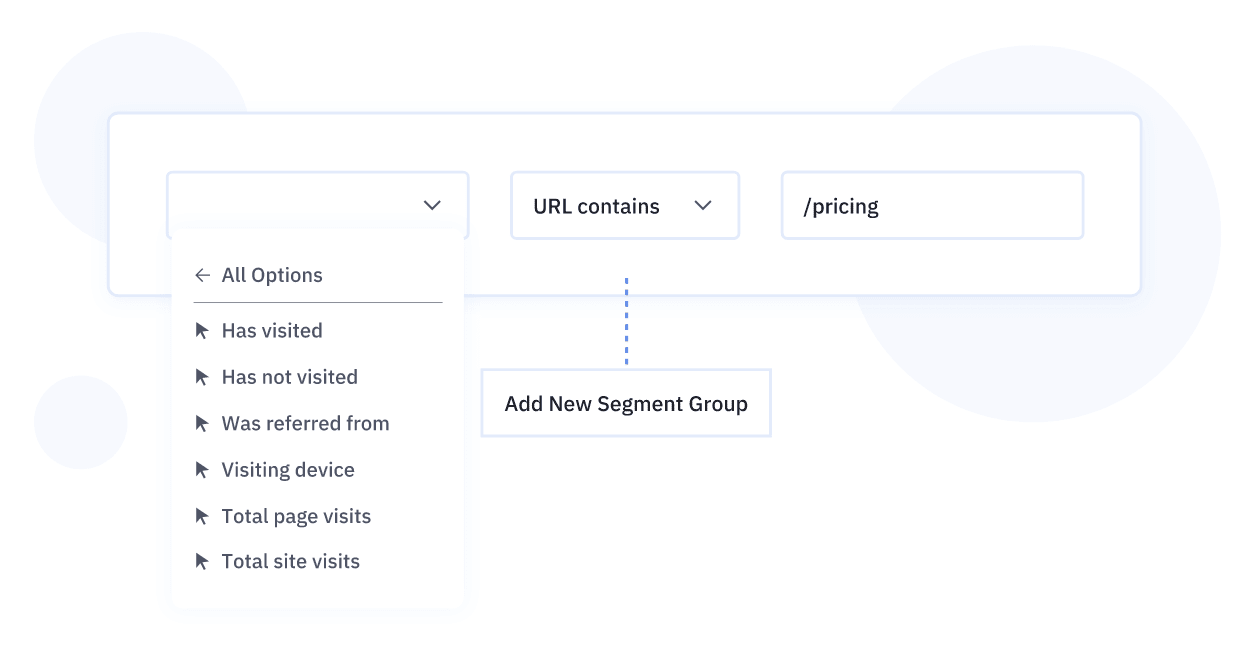
For example, you might have one list for people who have previously visited your homepage only and another list for users who looked at specific product or services pages on your website.
This allows you to send different messages to these two types of user. The aim with former homepage visitors is to get them back on your site and re-engaged with your brand so you can find out more about what they’re looking for. As for people who have visited specific product or services pages, you already know what these users are interested in purchasing – so you can focus your messages around these products/services to increase your chances of getting the conversion.
Those are two of the most basic lead segments you’re likely to work with (this doesn’t mean they’re any less important, though) and we’re going to look at some more sophisticated examples throughout the rest of this guide.
In the meantime, here’s a quick list of some other lead segments to give you an idea of what’s to come:
- Homepage visitors
- Product/service page visitors
- Repeat visitors
- Email subscribers
- Content downloaders
- Shopping cart abandoners
- Existing customers (single purchase)
- Repeat customers
- Demographics (age, gender, location, etc.)
- Known interests
- Low-intent leads
- High-intent leads
- Hot leads (engaged)
- Cold leads (unengaged)
- Conversion completed
- Conversion uncompleted
The list can go on forever – it all comes down to the criteria you want to use to target your leads with unique messages.
Let’s say your company sells communications hardware and software for corporate business; things like phone systems and video conferencing setups. You know it can be hard for businesses to choose the right systems for their needs so you’ve created an e-book buying guide for people to download as a lead generation strategy.

Right off the bat, there are three obvious lead segments you’ll want to create here:
- People who visit your e-book page but don’t download it.
- People who download your e-book but don’t convert.
- People who download your e-book and do convert (ie: buy one of your products).
For people on list #1, you’ll want to reach out to them with messages encouraging them to download your e-book guide – perhaps highlighting the challenges of choosing the right system.
People on list #2 did download your guide but, for whatever reason, didn’t go on to buy a system from your business. Perhaps you need more information about these businesses to make more relevant suggestions. Or maybe a discount offer will be enough to turn these readers into customers. The good news is you’ve got these users’ email addresses from the moment they download your e-book and this gives you a solid platform to find out more about these leads, try out different messages and segment further if needed.
As for list #3, well, this is where your e-book worked like a charm and people bought from you after reading through your guide. This doesn’t mean your job is done, though. You want to turn these customers into loyal, repeat buyers or brand advocates who recommend you to other businesses – perhaps both.
Why is lead segmentation important?
Without lead segmentation, you’re just sending the same generic messages to everyone. You’re not addressing specific needs, showing people which problems you’re going to solve for them or giving them any reason to believe they should buy from you instead of the countless other businesses offering a similar package.
As Venture Harbour CEO Marcus Taylor explains in another blog post, lead segmentation resulted in an 89% sales uplift & 58% increase in average order value for one of our other ventures, MusicLawContracts.com.
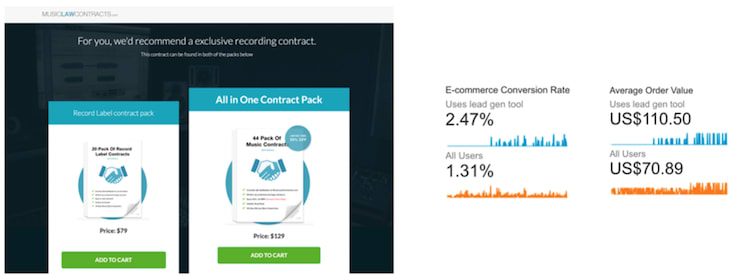
Think about it.
When someone’s in the market for a new car, they don’t just wake up one morning and say “I should probably buy myself a BMW X5”.
They turn to Google and start the long journey of trying to find the best possible car for their personal needs, within their budget (at least, this is how it normally starts).
So our future BMW X5 buyer is probably going to start with a Google search along the lines of “best family cars 2019” or “best cars for dog owners 2019”.
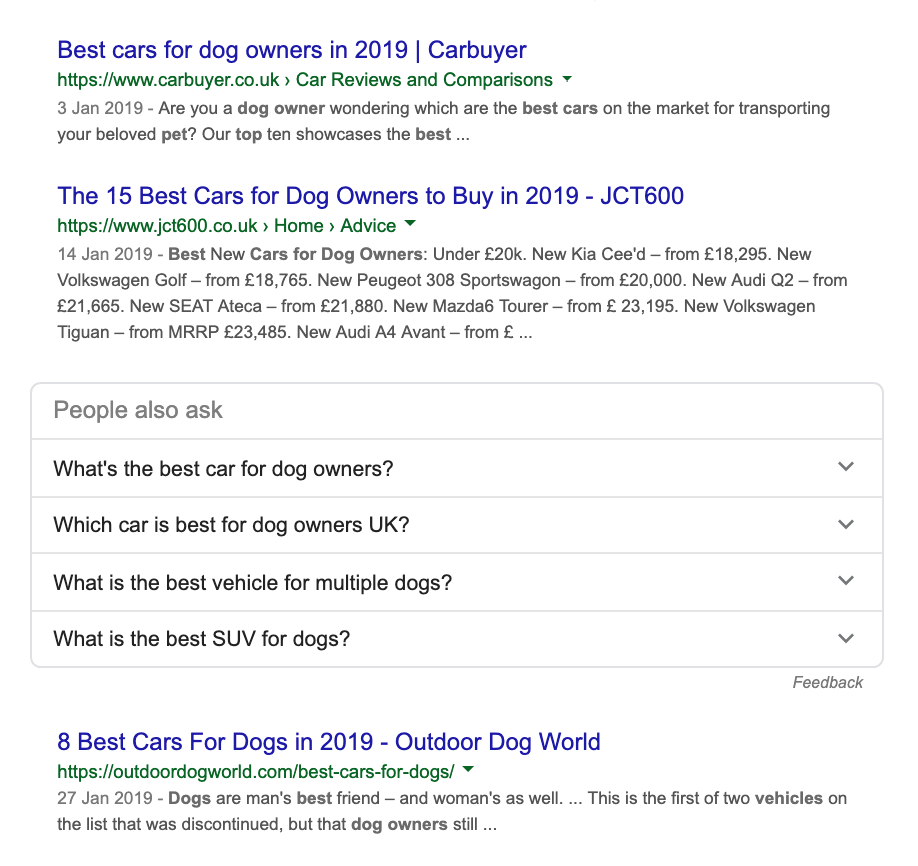
These initial searches already offer up a world of information about what these people are looking for and why. So car manufacturers, retailers, leasing firms and anyone else interested in selling to these types of people need to address the unique needs of each target audience.
The first stage of lead segmentation is targeting audiences, based on their unique needs, so you can bag them as leads to begin with. A company marketing BMW X5s needs to know what the key selling points of this particular vehicle are and what the people most likely to buy into them are going to search for using Google, which kind of content they’re going to click on in Facebook or which video ads are going to grab their attention on YouTube.
The second stage is creating segmented lists for each stage of your sales funnel. So, after you’ve generated a new lead, you can target it with messages designed to move it on to the next stage of the buying process. Then, you target them with messaging to move them on to the next stage after that – and so on – until the purchase is complete.
What tools do you need to segment your leads?
As with any kind of marketing strategy, you need the right tools to get the job done and the same thing goes for lead segmentation. The good news is there’s an excellent supply of tools available to help you segment and manage leads.
This is one area where marketing software has really excelled in recent years.
Here’s a quick look at what you’re going to need.
A customer relationship management (CRM) platform
The most important tool (aside from your website, perhaps) is a CRM platform that allows you to create and manage your segmented lists. With a CRM platform, you can also create profiles for individual leads (once you’ve got an ID) and customers, which means you can update their info as they progress along the buying process and you gain more data about them.
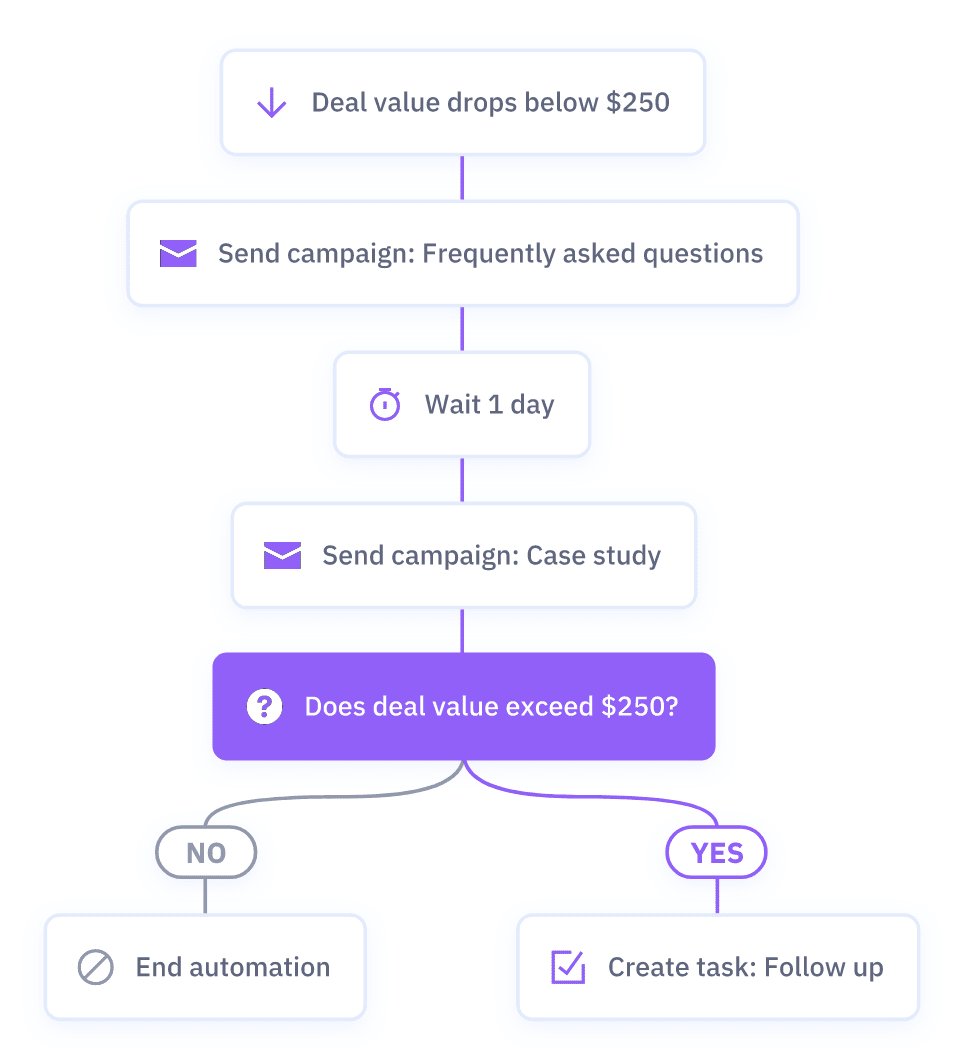
This is the platform that allows you to deploy targeted messages to each of your lists and then move contacts on to another list when they complete the desired action (one that reflects they’ve taken the next step towards a purchase).
Email marketing software
You’re also going to need a solid piece of email marketing software because this is how you’re going to reach the majority of people on your segmented lists. There are plenty of email marketing platforms out there but you’ll want to make sure you choose one that integrates with your CRM.
You’ll also want to make sure you have the right automation features within your CRM-email marketing combo, so you’re not manually sending mails or moving contacts onto other lists.
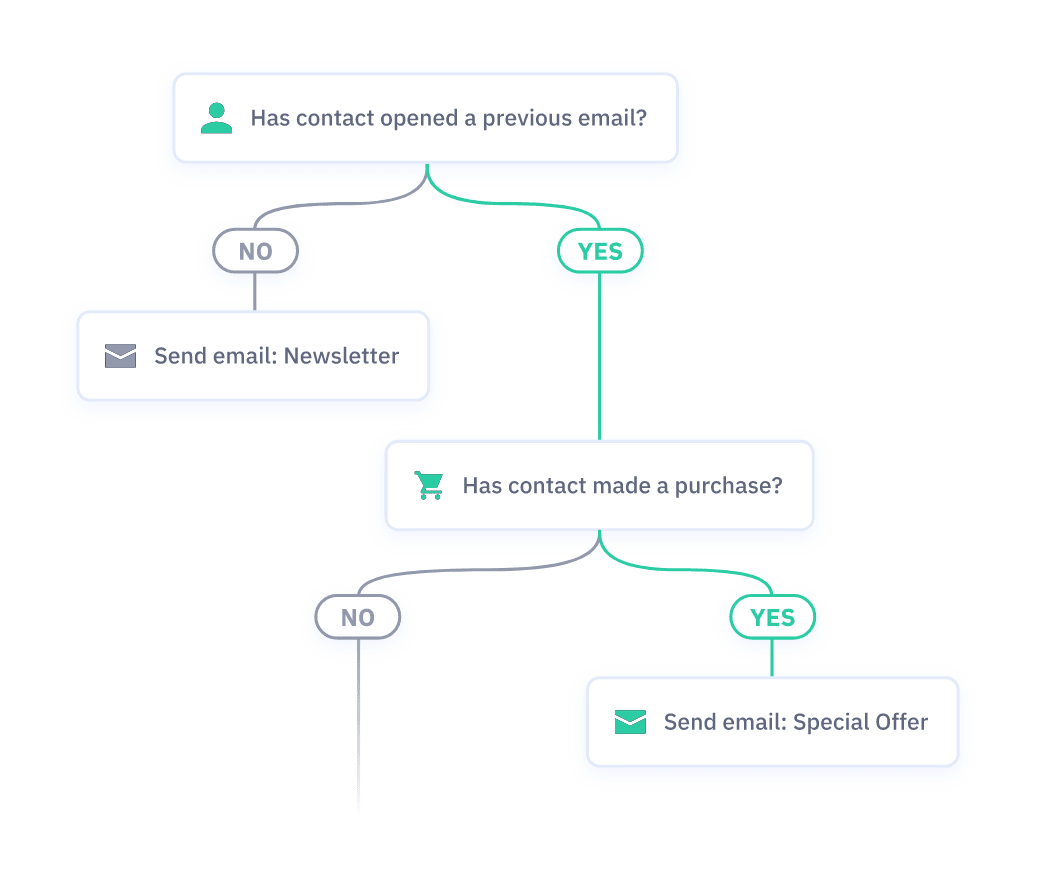
This is one of the key reasons we stuck with ActiveCampaign as our CRM – because it’s also a killer piece of email marketing and automation software. With ActiveCampaign, it’s not only our lead segmentation strategy that’s fully automated, but also the majority of our lead nurturing and sales processes, too.
High-converting web forms
Because lead segmentation relies so heavily on getting email addresses from users, you need to have a string collection of high-converting forms across your website.
We’ve spent a lot of time designing and optimising web forms over the years – so much so, we ended up building our own form builder and optimisation software.
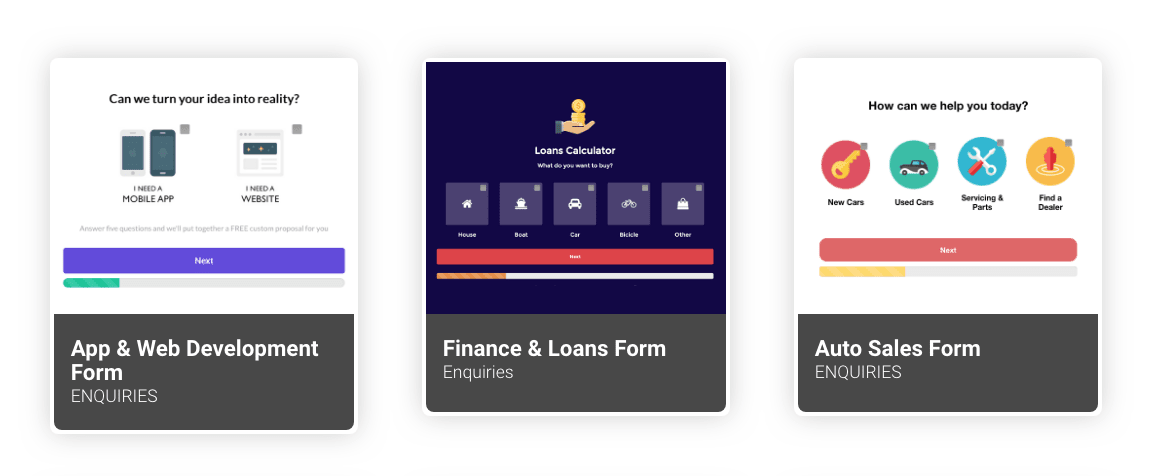
With Leadformly, you can create high-converting web forms in minutes and optimise them for better results with the platform’s built-in form analytics tools.
Instead of the static web forms, most people are used to seeing, Leadformly focuses on creating multi-step forms that have resulted in increasing conversions by 300+% in tests.
This is important, of course, because you can’t segment leads you fail to capture. But there’s something else really important built into Leadformly that’s going to make a huge difference to the way you handle leads.
Leadformly uses something called conditional logic to only request relevant information from users, based on the details they provide along the way. Essentially, this removes optional form fields and irrelevant question – a very good thing for form conversion rates.
But it also allows you to segment leads on your website and gain valuable insights as soon as they hit the send button. This means you’re not sending out generic email responses for everyone who signs up. Instead, you can put new contacts on your segmented lists right away send out highly-relevant, engaging messages from the first interaction.
We’ll cover this in more detail later.
Lead segmentation: A step-by-step guide
Now that know what lead segmentation involves and the tools you’re going to need, let’s take a closer look at the process, step-by-step.
Here’s a quick summary of what we’re going to be covering in this section:
- Audience research
- Sales funnels
- Choosing your segments
- Implementing lead segmentation systems
- Automating lead segmentation
Step #4 is going to have multiple sections, covering various segmentation strategies – the kind basically every business wants to have implemented.
First, though, it’s all about audience research.
Step #1: Know your audiences
As mentioned earlier, the first stage of lead segmentation is actually securing those leads in the first place. You’re not just aiming for every possible lead you can capture, either; you’re looking to get highly-targeted, relevant leads that are likely to go all the way and buy from you.
This brings us back to the BMW X5 example from before. You need to know exactly what makes your target audiences tick, what they’re looking for from a brand like you and pinpoint highly specific needs.
Without this kind of knowledge, your segmented lists are going to be too generic and you’re going to leak all kinds of leads between different stages of your sales funnels.
Speaking of which.
Step #2: Know your sales funnels
The needs, expectations and actions of your leads are going to change as they move along the buying process. To address these changing needs, you’re going to create lists for each stage of your sales funnels and place contacts on them, based on their most recent actions (pages visits, content downloads, email sign-ups, purchases, etc.).
The key thing is to understand what these actions say about people’s position along the buying process and what they need to take the next step.
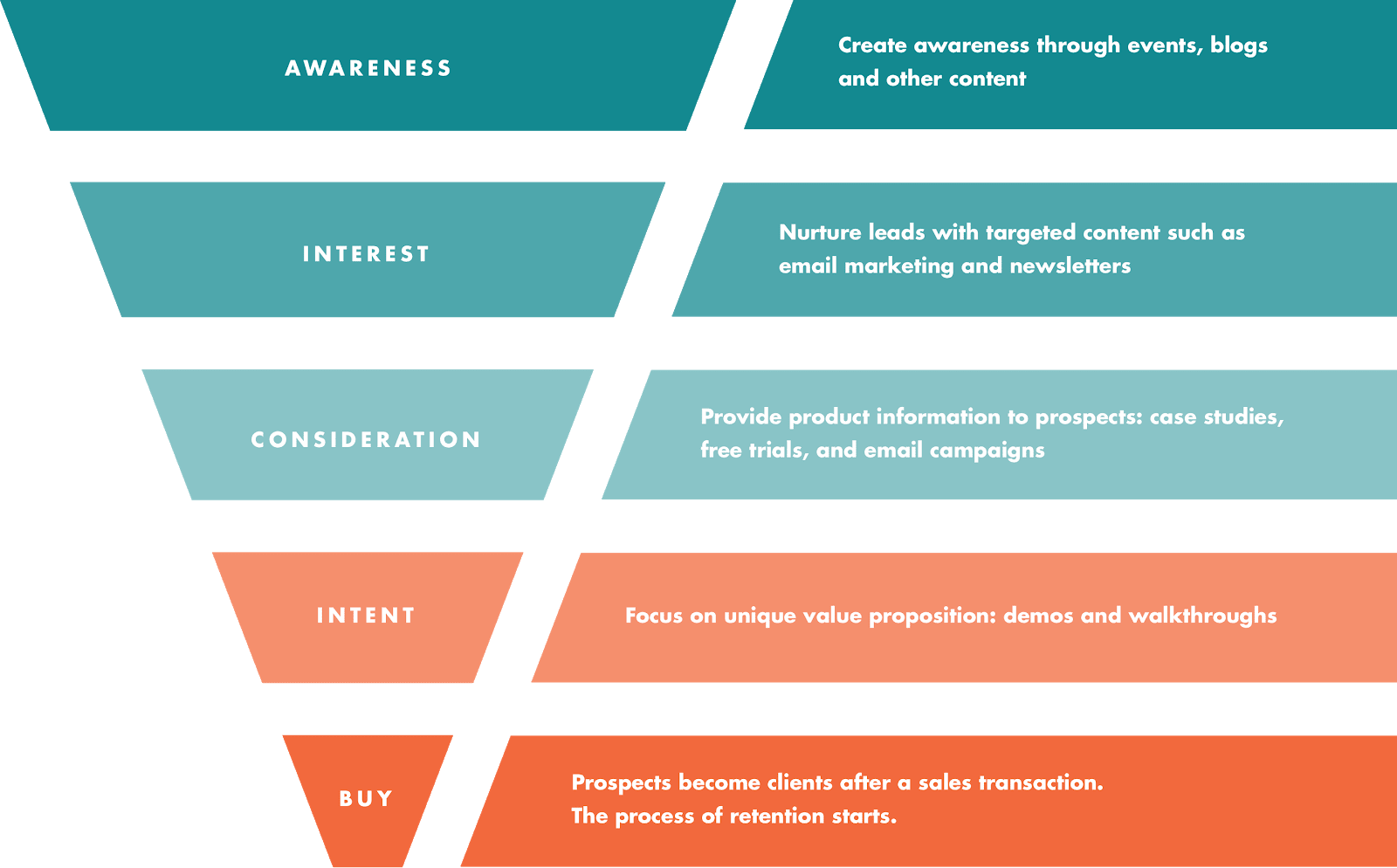
For example, someone who downloads your guide to buying website hosting and visits multiple reviews for providers like Bluehost and WP Engine clearly shows a strong purchase intent but needs more help with making the right decision.
In this scenario, you can segment your leads when they download your guide using Leadformly to find out more about each lead’s requirements. This means you can create lists for small businesses, enterprise brands, WordPress websites, e-commerce sites, etc. and send them a personalised list of the best hosting providers for their needs – e.g.: best hosting providers for small business WordPress websites, best hosting providers for online-only retailers, etc.
The further leads progress along your sales funnels, the more specific your content and messages should be to their individual needs.
Step #3: Pinpoint the segments that matter to you
There are thousands of different segments you can use to refine your marketing messages, target highly focused audiences and reach leads at different stages of the buying process.
In fact, one of the most challenging things about lead segmentation is pinpointing the segments that really matter to you. You want your strategy to be manageable and you also want your messages to be highly relevant so creating ineffective segments can be a major problem.
Broadly speaking, there are two main categories for lead segments: characteristic and behavioural.
Examples of characteristic segments
Characteristic segments describe key attributes of your target audiences in areas where you need to differentiate. The most straightforward example of this would be user location, if you need to target leads with different messages based on where they live.
Other examples of characteristic segments include:
- Geographic: Location, country, language, etc.
- Demographic: Age, gender, nationality, etc.
- Sociographic: Marital status, children,
- Psychographic: Personality traits, values, attitudes, interests, etc.
- Professional: Occupation, income, education, etc.
- Corporate: Company size, industry, position at company, etc.
Essentially, characteristic segments allow you to create lists based on buyer personas. This is important from a targeting perspective, so you can reach tech startup CEOs in London, for example, with highly relevant messages.
However, to take your lead segmentation strategy to the next level and adapt your messaging, as leads progress through the buying process, you’ll need to target them based on behavioural actions.
Examples of behavioural segments
Behavioural segments define your leads based on the actions they take and this allows you to guide prospects along the entire path to purchase.
For example, someone who visits your homepage and another visitor who clicks through to one of your landing pages demonstrate different behavioural patterns.
In most cases, your homepage should appear in search results for relatively generic or branded searches. Whereas, PPC traffic will have typed in a targeted search term that normally indicates a higher level of purchase intent. Not only that, but they’ve engaged with your ad offer and clicked through to find out more about a specific product, service or offer.
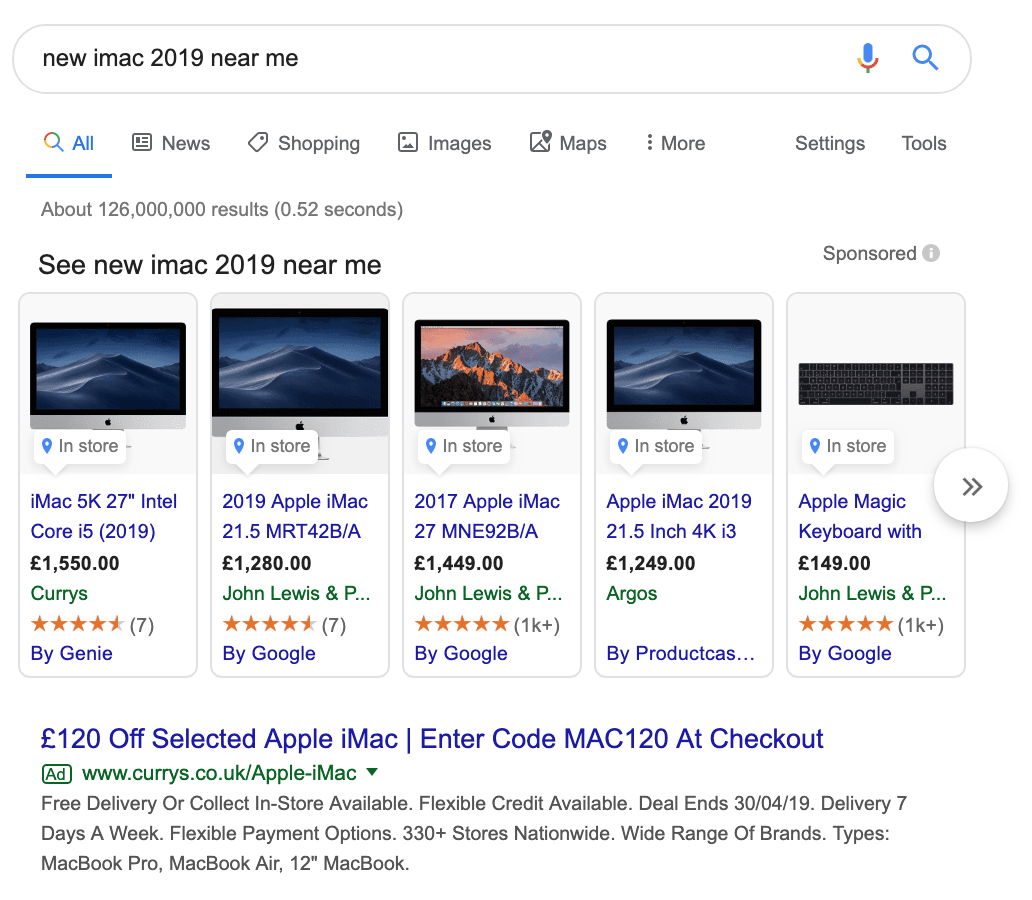
Clearly, the second of these two leads demonstrates a higher value and offers a lot more clues as to what kind of subsequent messaging they might respond to.
Further down the sales funnel, someone downloading one of your e-book’s demonstrates significant engagement with your brand and proven they’re willing to fill out a form and hand over personal details for some helpful content.
Key behavioural segments may include:
- Page visits: Homepage, landing pages, product/service pages, etc.
- Regular visitors: Regular blog readers, multiple visits to product/service pages, etc.
- Referral source: Traffic from organic search, paid search, social, email, etc.
- Referral message: What prompted users to click through from each source (special offer, new product launch, buyer’s guide, free download, etc.)?
- Email sign-ups: Newsletter, e-book downloads, webinar sign-ups, etc.
- Content categories: The topics regular blog readers show interest in, e-book topics, webinar subjects, page categories – any topical interest you can measure via page visits, downloads or other engagements.
- Keywords: The keywords users type into search engines before clicking on your ads (easiest with single keyword ad groups).
- Free trial/demo: People who want to try out your SaaS product/service.
- Purchases: First-time buyers, product/service category, amount spent, related products/services, etc.
- Multiple purchases: Repeat buyers, purchase history, product/service categories, customer value, etc.
- Customer experience: New customers, repeat customers, loyal customers, customer experience issues, etc.
Your ability to measure these actions will depend on the CRM and analytics set up you’ve got. Accurately tracking repeat visitors, for example, is relatively simple if you have user accounts that people stay signed into between visits.
Otherwise, you’ll want to make sure your CRM has some kind of site tracking feature that uses cookies to place an ID on visitors and allow you to track visit numbers – as well as the actions they take during sessions.
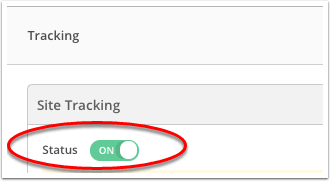
Once you’ve decided which actions you want to use to target users, you’ll want to assign a lead score to each behaviour. The easiest way to do this is to go back to your sales funnels and place each action at the most relevant stage of the buying process.

For example, a first-time visitor to your website will fit in the “awareness” category (or whatever you’re calling this stage of your funnel) whereas repeat visitors who keep reading blog posts in the same category or visit the same product/service page belong in the “interest” category.
Assigning actions to each stage of the sales funnel gives you the roadmap you need to guide users from one stage of the buying process to another.
Step #4: Implement your lead segmentation systems
Now you’re ready to implement your lead segmentation systems across your website, CRM and other channels. The process will vary for each of these and your ability to do so will also vary depending on the tools you have available.
The most reliable way to segment, track and engage users throughout the consumer journey is to get them onboard as an email contact. But getting email addresses takes a little work so we’ll start by looking at ways you can segment and target visitors before they sign up to anything.
Segment organic search traffic
To segment organic search traffic you’re going to need a CRM platform that allows you to place IDs on visitors. This enables you to distinguish between first-time visitors, repeat visitors and the actions users take across multiple sessions.
This gives you the tracking ability to create lists based on the URLs users visit and the number of times they visit each page. You can then create lists based on these URLs to assign contacts to actions and interests – e.g.: repeat visitors showing a strong interest in business automation or users repeatedly visiting one of your product/service pages.
Segment your paid advertising leads
Google Ads is a great tool for segmenting leads because you can target people at specific stages of the buying process, based on the keywords they type in.
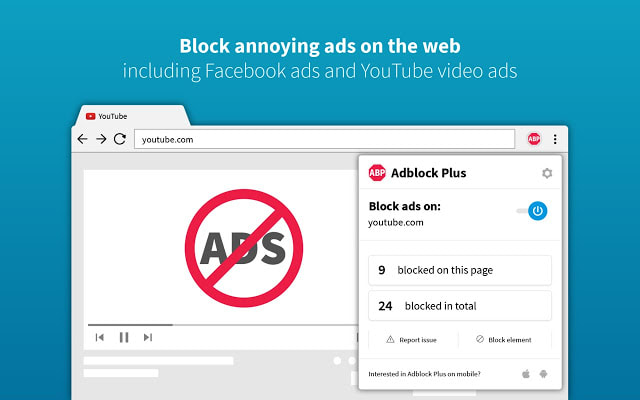
You can also refine these segments further by using Google Ads’ targeting options to target users based on their location, demographic (age, gender, etc.), device type and various other factors.
This allows you to target specific audiences and essentially pre-segment your leads from Google Search but to turn your PPC traffic into leads you can actually nurture, you’ll need to use cookies to identify these users and then place them on remarketing lists.
Remarketing lists are where Google Ads really shines in terms of lead segmentation.
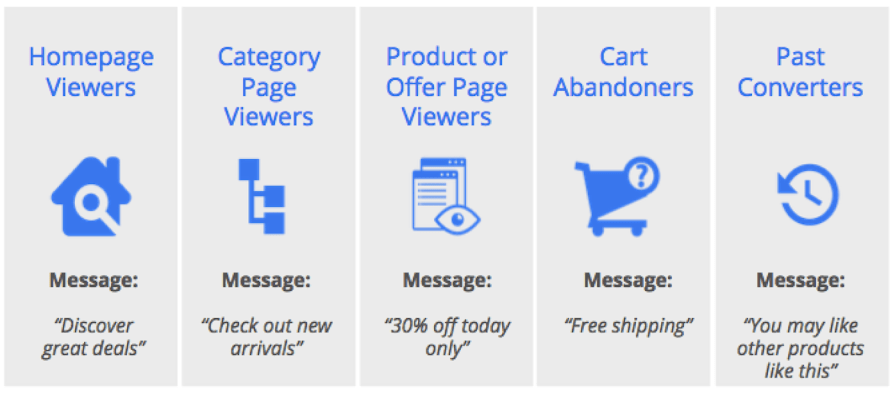
Remarketing in Google Ads allows you to target previous visitors with visual ads as they continue to browse the web. These are people who have shown an interest in your brand or products/services but didn’t convert right away – the vast majority of PPC traffic, in other words.
With remarketing lists, you can segment your PPC traffic in a similar way to ActiveCampaign. The easiest way to do this is by setting up URL-based conditions to place people on lists, allowing you to target people based on the pages they have visited (e.g.: form completion pages, blog pages, product pages, etc.).
To get the most out of remarketing lists, though, you’ll want to integrate with Google Analytics and create remarketing audiences based on user actions. This is where you can start targeting users with ads based on click events (button clicks, mostly) for items they’ve added to baskets. forms they’ve started filling out, items they haven’t added to their basket and all kinds of other actions that reveal a user’s purchase intent.
Crucially, you can also set up these events to automatically move prospects from one list to another once they take an action that demonstrates they’ve moved onto the next stags of the buying process.
Segment your email marketing contacts
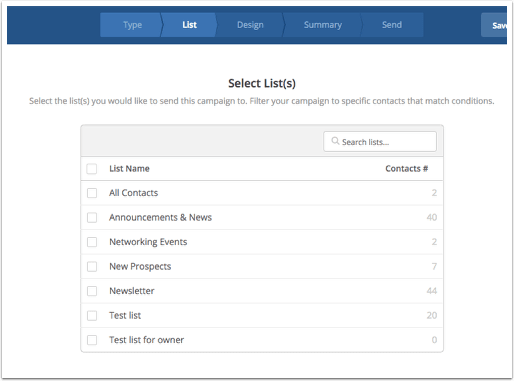
As mentioned earlier, the most reliable way to segment and nurture leads long-term is through email marketing. Using cookies and tracking IDs is fine but the technology isn’t 100% reliable and the recent changes to consent under GDPR has made it a little trickier to use them.
Email marketing, on the other hand, gives you a direct line to individual leads so you can target them with personalised messages, based on their interactions with your brand.
You also get a wealth of automation features with modern email marketing software and this really takes your lead nurturing efforts to the next level.
So, first of all, make sure you have the right piece of email marketing software on your side. Take a look at our list of 10 best email marketing software and tools for some recommendtions.
Segment email leads on your website
Most brands leave it too late to start segmenting their email marketing leads. You’re not going to make the same mistake.
Earlier, we mentioned Leadformly as a tool to increase email sign-ups and we also touched on using it to segment leads on your website. Using conditional logic, Leadformly allows you to collect information about users as they’re filling out your forms and you can forward this data to your CRM when they hit the send button.
This means you can place sign-ups on segmented lists right away, based on the information they’ve submitted, and send out more relevant responses from the very first email.
So you’re no longer lumping everyone on the same list, sending out generic responses and then spending your first few email exchanges trying to get more details about prospects.
You can do all of this during the sign-up process with Leadformly and start sending out engaging email messages from the first interaction – no messing around. And, better yet, you can automate the entire process, drastically increasing the quality of leads by the time your sales team starts working with them.
Segment your blog traffic
We’ve already looked at how you can use your CRM to segment blog traffic by placing IDs on visitors and tracking the pages they visit. As mentioned earlier, though, cookies aren’t 100% reliable and it pays to get your hands on email addresses wherever possible.
A great strategy for this is to create email lead gen content for the key topics/categories on your blog. It could be in-depth guides, eBooks, webinars, free downloads or whatever you decide will generate the most interest from potential customers.
Create this kind of content for all of the key topics covered in your blog and then you can dynamically insert CTAs throughout your blog posts, using the category of each post as a variable.
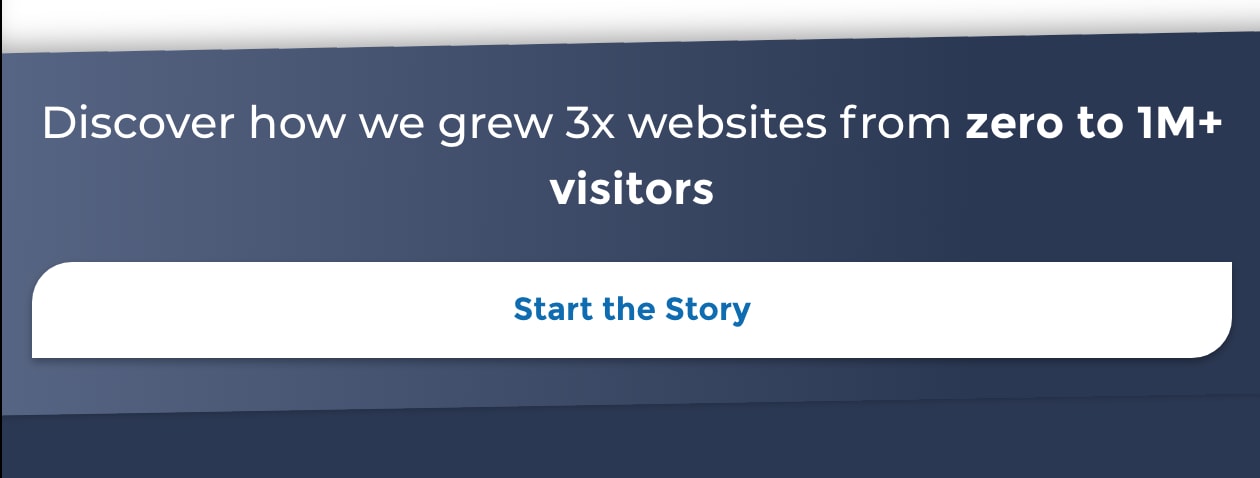
This means, every time you publish a new blog post, CTAs will be automatically added to the main body of content, matching the category you define before publishing. So every post covering social media marketing, for example, will show the CTA for your in-depth guide on getting better results from social marketing.
Crucially, every time a user downloads your email gen content via your blog post, you know these visitors have a strong interest in this topic and you can segment each lead accordingly.
Segment your customers
Research shows it costs five times more to attract a new customer than it does to get a second sale from an existing one. In other words, customer retention is far more cost-effective than customer acquisition.
More to the point, you’re never going to maximise your marketing ROI unless you’re able to get the most value out of every customer.
The first purchase is only the beginning and now your attention turns to increasing the customer lifetime value of each lead after the initial sale. This starts with lead segmentation and here are some crucial lists you’ll want to have in your customer retention strategy:
- Single purchase: Product/service category.
- Multiple purchases: Product/service categories.
- Recommendations: For each product/service category, key combination of categories.
- Value: Value of first sale, total value of previous sales.
- Expected value: Estimated ongoing value of customer if purchases continue.
- Reviews: Customers who haven’t yet left a review.
- Cold customers: Those who haven’t made a purchase recently.
- Unengaged: Customers who are showing less engagement than usual via email, signing into their account less often, using your platform less frequently or show signs of engaging less with your brand.
Of course, there will be demographic factors (age, location, industry, etc.) you’ll also want to apply to your customer segmentations but our focus in this section is the idea of turning first-time buyers into repeat customers and then keeping them engaged on an ongoing basis.
#Step 5: Automate segmentation, list progression & messaging
Implementing all of the lead segmentation strategies we’ve covered in this guide and then managing them manually is basically impossible. At the very best it’s a highly-inefficient approach and the key to maximising your leag segmentation strategy is to automate as much of the process as possible.
Above all, you need to automate the process of moving leads from one list to another as their actions indicate their purchase intent changes along the buying process.
This allows you to automatically send relevant messages to leads and customers and deliver a more relevant, personal experience every step of the way. First-time visitors will be encouraged to come back to your site, users looking at specific product/service pages will be enticed with ads tempting them to complete the purchase and first-time customers will be encouraged to make the next purchase.
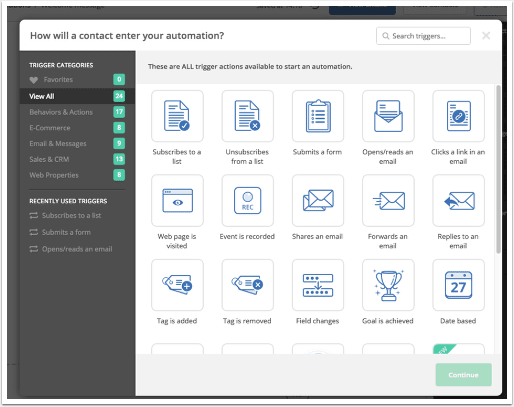
By automating this process, you have the freedom to create complex lead segments and target very specific actions. For example, you can distinguish between users who have visited a product page one, those who have visited multiple times and those who have compared multiple similar product pages.
These are subtle but significant actions that tell you a lot about what each lead needs to take the next step towards buying. And an automated lead segmentation strategy means you can address these needs at every stage of the sales funnel.
When a user completes the next desired action, they’ll automatically be moved on to the next list and targeted with messages designed to move them on once more – all the way until the next purchase.
Conclusion: Segment your way to sales success
By segmenting your leads in the way we’ve described today, you’re going to increase the quality of your leads and start delivering more influential messages to them from the first interaction. The better equipped you are to identify how user needs change along the consumer journey, the more successful you’re going to be at guiding them towards the finishing line.
Lead segmentation gives you the practical system to reach users along the way and nurture them along the sales funnel. And with the automated approach we’ve shown you in this guide, you can set up a lead segmentation and nurturing strategy that takes leads all the way – to the first purchase and beyond.
